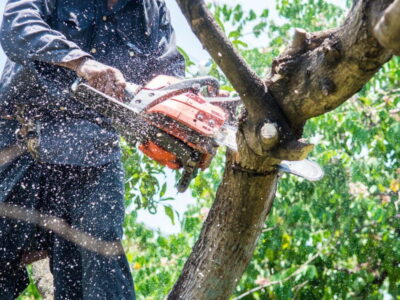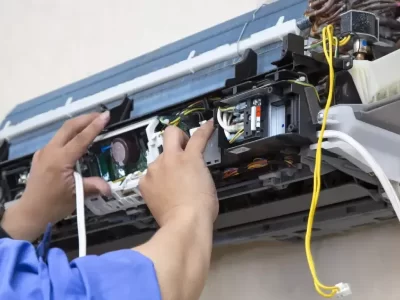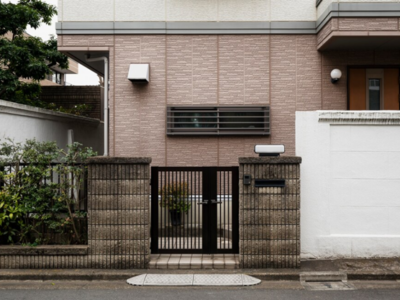Projections show that the global pest control market will reach a value of $30 billion by 2027.
There’s a range of pests that like to live in our homes. Getting rid of pests in walls can be tricky, but it’s not impossible. There are several things you can do to take care of an infestation.
For a guide on getting rid of pests in walls, keep reading.
What Pests Will You Get In Your Walls?
Different pests live in different types of environments. Bed bugs, for example, tend to be found in beds and other furniture, or among clothes.
Wasps or hornets may build nests in your home. This will commonly be in your yard or somewhere on the outside of your house.
The most common wall pests are mice and rats. One of the biggest concerns of a rodent infestation is their droppings, which can release harmful particulates into the air.
What Attracts Pests to Your Home?
Your home can be a comfortable environment for different types of pests. One of the main things they look for is shelter, which they’ll have plenty of within your walls. This is especially true in winter when they’re trying to escape the cold.
Rodents aren’t fussy eaters, so being able to easily access food will bring them into your home. Mice have a very strong sense of smell, so leaving food out is sure to attract them.
When looking to make a nest, there are plenty of suitable materials in any home that rodents will use. Things like insulation, pet hair, paper, and cotton all work well.
Some of these factors are essentially impossible to remove, meaning almost any home is vulnerable to infestations to some degree. Knowing how to get rid of pests is ideal for anyone.
Signs of an Infestation
There are some signs that rodents tend to leave which help determine whether or not you have an infestation.
- Droppings – these are small but can be found anywhere a mouse or other rodent has been, so you may often find them in cupboards, under sinks, or in the corner of rooms
- Chew/scratch marks – you might notice this near food packaging or around floor trim
- Food crumbs and debris – these may appear anywhere near, or in more unusual places like the middle of the floor
- Nests – made of materials such as those mentioned above, these are a bit harder to notice as they will often be in hard to access places
- Noises – noises coming from inside your wall, such as scratching or squeaking (this is generally more noticeable at night)
- Odd pet behavior – your pets might become aware of a pest infestation before you, so if it seems like they’re trying to get under appliances this may be the cause
If you notice one or more of the above, you can be fairly certain you have a pest infestation.
Getting Rid of Pests in Walls
The best way to get rid of household pests varies depending on the pests themselves, and the degree of infestation. There are several humane ways you can get rid of pests, but if these aren’t suitable you might need to use a more aggressive method.
Humane Methods
Without food, pests will have to move on. Store food in metal or glass containers that they can’t chew through. Clean up any spills immediately and store food waste in tamper-proof bins.
The same goes for nesting materials – keep fabrics, blankets, rugs, etc. stored in containers that pests can’t get into. Dispose of any recycling quickly and generally keep your home clean.
Mice can get through incredibly small gaps, so keep any holes sealed to stop them from getting in. You can even use steel wool to block off vents without stopping the airflow. If you go with this method, you’ll need to regularly keep on top of it.
Pests with a strong sense of smell will be attracted to food but may be put off by other smells. There’s a range of smells that rodents don’t like, including:
- Peppermint oil
- Cayenne
- Pepper
- Cloves
- Apple cider mixed with water
Mice will always avoid predators, so getting a cat is a great way to keep mice out. You can also use ammonia as it smells like the urine of a predator, so mice will stay away.
Live traps are another option, and you can then release mice back outside. Just bear in mind you’ll need to release them at least a mile away or they will likely find a way back in.
Ultrasonic units are also available, and they can keep a range of pests away from your home.
Traditional Methods
With a serious infestation, you may need to use more conventional methods, with the most common being traps. They are quick and effective but aren’t always ideal for larger infestations.
Baiting can also be used to poison mice, but this has a few downsides:
- It’s inhumane
- Potentially harmful to kids and pets
- You must search for mice that have been killed by the poison
- Mice may spread the poison
- Different areas have varied laws on using rodent poison
Aside from the natural repellants mentioned above, there are other types available that are more effective with large infestations. It can be very difficult to get rid of large infestations yourself, so hiring a professional pest control company is often the best idea.
Pointe Pest in Bridgeport, PA can help remove all kinds of pest infestations from your home such as rodents, termites, cockroaches, bedbugs, and more. Head over to pointe-pest.com for more about their services.
Keeping Pests Out
Getting rid of pests in walls is one thing, but keeping them out is another. Make sure you follow all the preventative steps above to minimize the risk of infestation. If you do hire a professional company, they might also be able to give you some advice that’s more specific to your home to help keep pests out.
If you’re interested in reading more home-related articles check out some of our other blog posts.












Comments